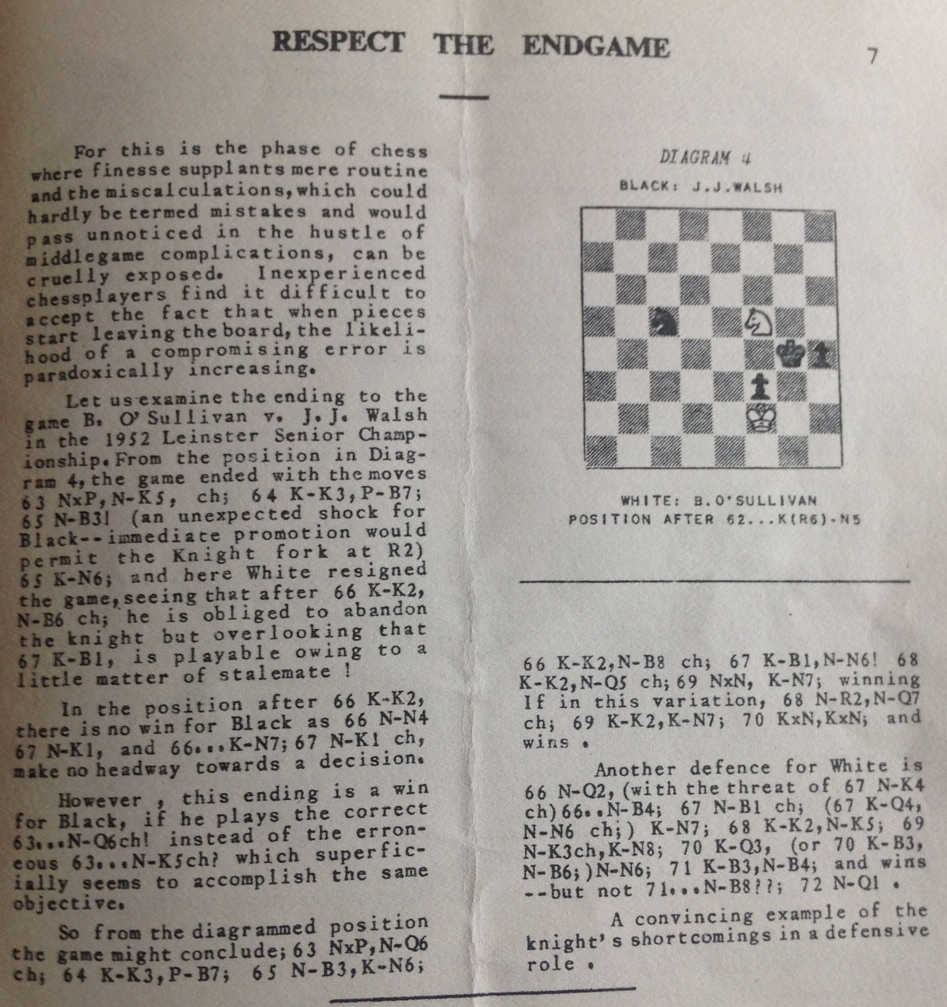I had never seen the original article in “the Irish chess magazine” that Golz and Keres quoted, but now it has been supplied by David McAlister, for which many thanks. The article appeared in Chess in Ireland, September 1959, p. 7. The author isn’t listed, but J. J. is listed as the general editor of the magazine, so it’s reasonable to assume he wrote this article.

The content of the article came as a surprise to me. I had always assumed from the description in Chess Combination as a Fine Art that the analysis in the original source was faulty, and that the solution given by Golz and Keres corrected the errors. That’s not stated explicitly, perhaps, but I had always read it as implied.
But as we see from the full text above, the analysis given by Golz and Keres was in fact taken entirely from the original article by J. J. Walsh. Their only further reference to the original comes at the end of their solution (pp. 236-7):
“This instructive endgame shows the uselessness of the knight in a defensive role!,” comments Chess in Ireland. Yes, but at the same time its skilful application in attack!
It’s not explicitly claimed that the original missed both stalemate and improvement, but that would be consistent with what is quoted.
There is one other point that struck me as unusual. The question as posed by Golz and Keres (see clipping two posts back) comments that the endgame “is particularly interesting because of the number of mistakes it contains”. But according to their own solution, there were two errors (1. … Ne4+? and White’s resignation). Tablebases have shown the modern reader that multiple errors are commonplace even at the very highest levels, but even without this information, would a pair of errors really seem so unusual? It seems a rather sour comment to make.
